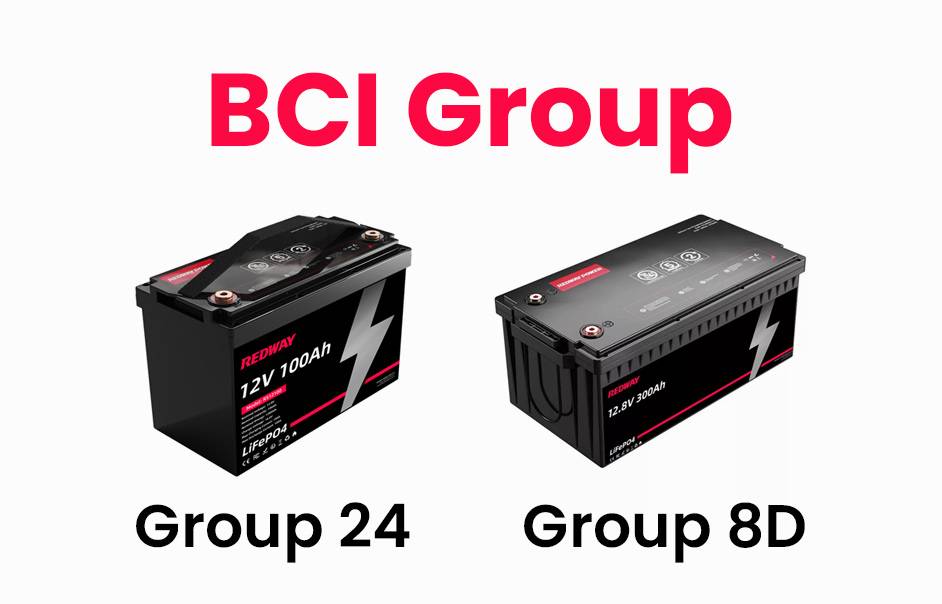- Forklift Lithium Battery
-
48V
- 48V 210Ah
- 48V 300Ah
- 48V 420Ah (949 x 349 x 569 mm)
- 48V 420Ah (950 x 421 x 450 mm)
- 48V 456Ah
- 48V 460Ah (830 x 630 x 590 mm)
- 48V 460Ah (950 x 421 x 450 mm)
- 48V 460Ah (800 x 630 x 600 mm)
- 48V 460Ah (820 x 660 x 470 mm)
- 48V 500Ah
- 48V 560Ah (810 x 630 x 600 mm)
- 48V 560Ah (950 x 592 x 450 mm)
- 48V 600Ah
- 48V 630Ah
-
48V
- Lithium Golf Cart Battery
- 12V Lithium Battery
12V 150Ah Lithium RV Battery
Bluetooth App | BCI Group 31
LiFePO4 Lithium
Discharge Temperature -20°C ~ 65°C
Fast Charger 14.6V 50A
Solar MPPT Charging - 24V Lithium Battery
- 36V Lithium Battery
- 48V Lithium Battery
-
48V LiFePO4 Battery
- 48V 50Ah
- 48V 50Ah (for Golf Carts)
- 48V 60Ah (8D)
- 48V 100Ah (8D)
- 48V 100Ah
- 48V 100Ah (Discharge 100A for Golf Carts)
- 48V 100Ah (Discharge 150A for Golf Carts)
- 48V 100Ah (Discharge 200A for Golf Carts)
- 48V 150Ah (for Golf Carts)
- 48V 160Ah (Discharge 100A for Golf Carts)
- 48V 160Ah (Discharge 160A for Golf Carts)
-
48V LiFePO4 Battery
- 60V Lithium Battery
-
60V LiFePO4 Battery
- 60V 20Ah
- 60V 30Ah
- 60V 50Ah
- 60V 50Ah (Small Size / Side Terminal)
- 60V 100Ah (for Electric Motocycle, Electric Scooter, LSV, AGV)
- 60V 100Ah (for Forklift, AGV, Electric Scooter, Sweeper)
- 60V 150Ah (E-Motocycle / E-Scooter / E-Tricycle / Tour LSV)
- 60V 200Ah (for Forklift, AGV, Electric Scooter, Sweeper)
-
60V LiFePO4 Battery
- 72V~96V Lithium Battery
- Rack-mounted Lithium Battery
- E-Bike Battery
- All-in-One Home-ESS
- Wall-mount Battery ESS
-
Home-ESS Lithium Battery PowerWall
- 24V 100Ah 2.4kWh PW24100-S PowerWall
- 48V 50Ah 2.4kWh PW4850-S PowerWall
- 48V 50Ah 2.56kWh PW5150-S PowerWall
- 48V 100Ah 5.12kWh PW51100-F PowerWall (IP65)
- 48V 100Ah 5.12kWh PW51100-S PowerWall
- 48V 100Ah 5.12kWh PW51100-H PowerWall
- 48V 200Ah 10kWh PW51200-H PowerWall
- 48V 300Ah 15kWh PW51300-H PowerWall
PowerWall 51.2V 100Ah LiFePO4 Lithium Battery
Highly popular in Asia and Eastern Europe.
CE Certification | Home-ESS -
Home-ESS Lithium Battery PowerWall
- Portable Power Stations
BCI Group 35 Batteries, Comprehensive Guide
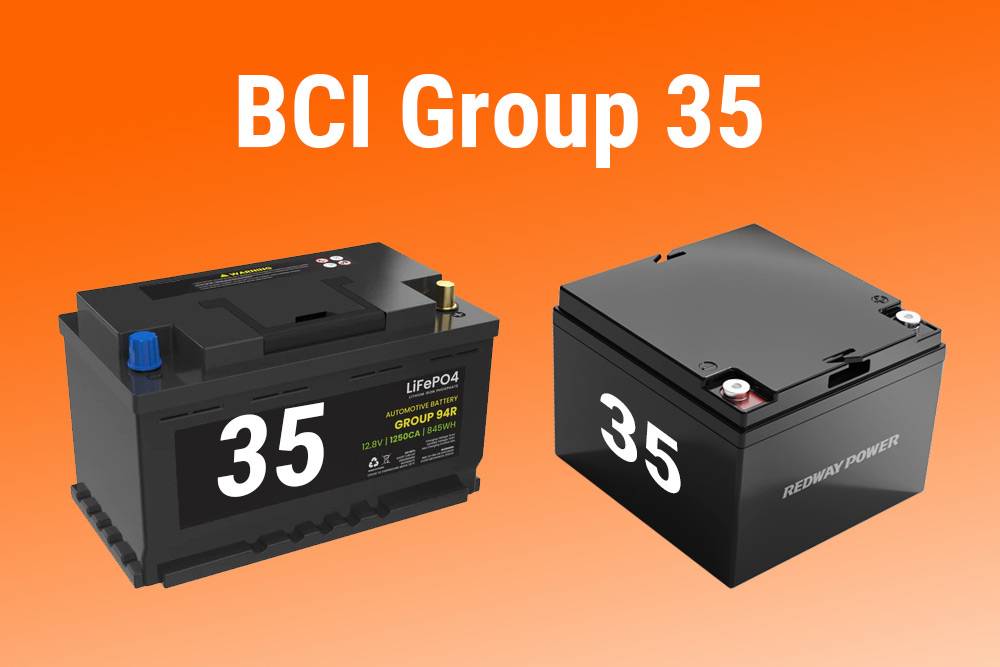
BCI Group 35 batteries are a popular choice for automotive and various applications due to their compact size and reliable performance. These batteries typically feature a capacity range of 42-65 Ah and are designed to provide dependable starting power and support for electrical systems in vehicles. Understanding their specifications, types, and applications can help you make informed decisions when selecting a battery.
What Does the “35” Mean in Group 35 Batteries?
The “35” in Group 35 batteries refers to a specific size classification established by the Battery Council International (BCI). This classification standardizes the dimensions, terminal placements, and other key characteristics of the battery, ensuring compatibility with various vehicles and equipment.
Chart: Dimensions of Group 35 Batteries
| Measurement | Inches | Millimeters |
|---|---|---|
| Length | 9.06 | 230 |
| Width | 6.88 | 175 |
| Height | 8.88 | 225 |
How Are Group 35 Batteries Used?
Group 35 batteries are commonly used in a variety of applications, including:
- Automotive: Ideal for cars, trucks, and SUVs that require reliable starting power.
- Marine: Suitable for powering small boats and personal watercraft.
- Recreational Vehicles: Used in RVs for both starting and auxiliary power.
- Backup Power: Effective in UPS systems and other backup power applications.
What Are the Different Types of Group 35 Batteries?
Group 35 batteries come in several types, each with its own advantages:
- Flooded Lead-Acid Batteries: Traditional design requiring maintenance but are cost-effective.
- Absorbent Glass Mat (AGM) Batteries: Sealed and maintenance-free, offering better performance and longer lifespan.
- Gel Cell Batteries: Designed for deep cycling applications but typically more expensive.
- Lithium-Ion Batteries: Lightweight with high energy density and long lifespan, though generally more costly.
Chart: Comparison of Battery Types
| Type | Maintenance | Lifespan | Cost |
|---|---|---|---|
| Flooded Lead-Acid | Requires | 3-5 years | Low |
| AGM | Maintenance-free | 4-7 years | Moderate |
| Gel Cell | Maintenance-free | 4-6 years | Higher |
| Lithium-Ion | Maintenance-free | 8-10 years | High |
Why Is Capacity Important in Group 35 Batteries?
Battery capacity is measured in ampere-hours (Ah) and indicates how much charge a battery can hold. Group 35 batteries typically offer capacities ranging from 42 to 65 Ah, which affects how long they can power devices before needing a recharge. A higher capacity is beneficial for vehicles or equipment that require more power.
How Do You Choose the Right Group 35 Battery?
When selecting a Group 35 battery, consider the following factors:
- Capacity Requirements: Assess your vehicle’s electrical demands to choose an appropriate capacity.
- Type of Battery: Decide between flooded lead-acid, AGM, gel cell, or lithium-ion based on your needs.
- Compatibility: Ensure the battery fits securely in your vehicle’s battery compartment.
Chart: Recommended Applications by Battery Type
| Battery Type | Recommended Use |
|---|---|
| Flooded Lead-Acid | Standard vehicles |
| AGM | Start/Stop systems |
| Gel Cell | Deep cycle applications |
| Lithium-Ion | High-performance electric vehicles |
What Are the Benefits of Using Group 35 Batteries?
Using Group 35 batteries offers several advantages:
- Compact Size: Their dimensions make them suitable for vehicles with limited space.
- Reliable Starting Power: They provide dependable performance even in cold weather.
- Versatility: Can be used across various applications from automotive to marine.
What Are Common Issues with Group 35 Batteries?
Some common issues include:
- Sulfation: Occurs in flooded lead-acid batteries if not maintained properly.
- Overcharging: Can lead to reduced lifespan, especially in AGM and gel cell types.
- Physical Damage: Damage from impacts can compromise performance.
FAQ Section
Q: How long do Group 35 batteries last?
A: The lifespan of a Group 35 battery typically ranges from 3 to 10 years, depending on the type and usage conditions.Q: Can I use a Group 35 battery in any vehicle?
A: Not all vehicles are compatible; always check your vehicle’s manual for specifications before purchasing.Q: How do I maintain my Group 35 battery?
A: Regularly check terminals for corrosion, ensure proper charging practices, and maintain electrolyte levels if applicable.
Industrial News
The battery industry is witnessing significant advancements in technology, particularly with lithium-ion batteries becoming more prevalent across various applications. Manufacturers are focusing on improving energy density, reducing costs, and enhancing safety features in new battery designs. This shift is expected to drive greater adoption of electric vehicles and renewable energy storage solutions as consumers seek efficient alternatives to traditional lead-acid batteries.
Redway Power Expert Views
“Understanding the specifications and applications of Group 35 batteries is essential for making informed decisions. Whether you’re powering a vehicle or backup system, choosing the right type can significantly impact performance and longevity,” states an expert from Redway Power.
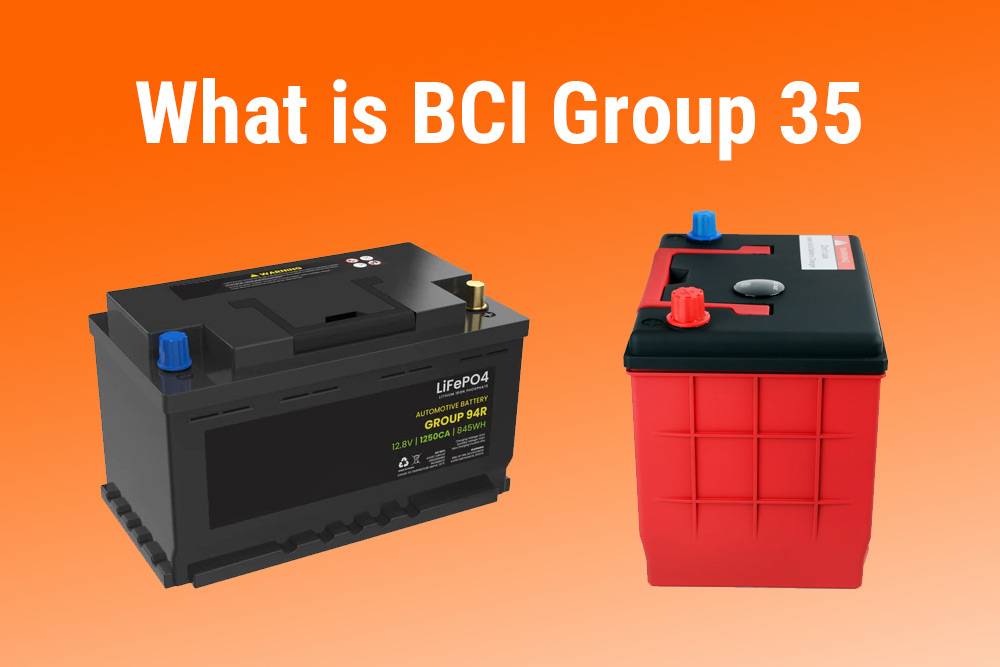
BCI Group 24F vs 35 Batteries for Your Car
What devices typically use BCI Group 35 Batteries?
BCI Group 35 batteries are commonly used in various vehicles and devices, including:
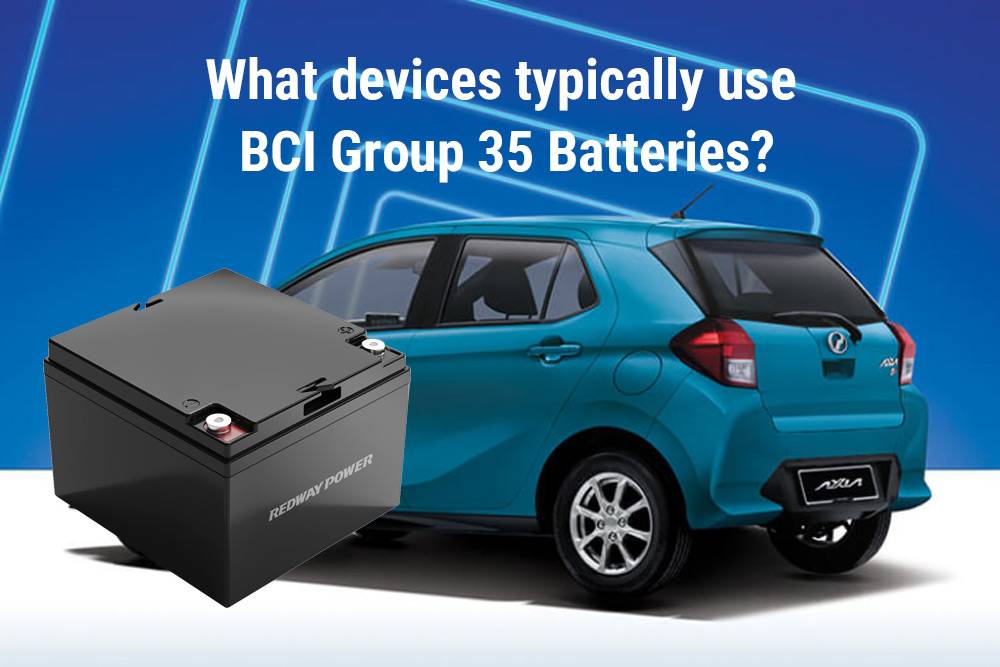
- Compact Cars: Group 35 batteries are frequently found in compact cars such as sedans, hatchbacks, and small SUVs.
- Small Trucks: These batteries are also used in small trucks and pickups that require a compact yet powerful battery.
- Recreational Vehicles (RVs): Some smaller RVs and camper vans may utilize Group 35 batteries to power auxiliary systems or as part of the main electrical system.
- Marine Applications: Group 35 batteries may be used in small boats or marine vessels to power onboard electronics, lights, and auxiliary equipment.
- Lawn and Garden Equipment: Certain lawn tractors, garden equipment, and utility vehicles may also use Group 35 batteries for starting and powering various accessories.
- Power Sports Vehicles: Some motorcycles, ATVs (all-terrain vehicles), and snowmobiles may be equipped with Group 35 batteries.
Overall, BCI Group 35 batteries are versatile and can be found in a wide range of vehicles and equipment where a compact yet powerful battery is required.
Best-Selling BCI Group 35 Batteries in 2024
Presented below is a chart featuring some of the top-rated BCI Group 35 batteries, along with their key attributes. The batteries are listed alphabetically for easy reference.
| Model | Battery Type
Battery Chemistry |
Ah
RC |
CCA
MCA |
Weight (lbs/kg) Review |
| Arc-Angel Group 35 | Starting LiFePO4 |
40 ~96 |
900 – |
16 lbs; 7.3 kg – |
| Bosch S6523B | Dual Purpose AGM |
53 110 |
650 780 |
40 lbs; 18.1 kg – |
| Delphi BU9035 | Dual Purpose AGM |
50 100 |
680 – |
40 lbs; 18.1 kg – |
| DieHard 38275 | Dual Purpose AGM |
50 100 |
650 – |
42 lbs; 19.0 kg – |
| NorthStar NSB-AGM35 | Dual Purpose AGM |
60 115 |
740 880 |
49 lbs; 22.2 kg – |
| Optima 8020-164 35 RedTop | Starting AGM |
44 90 |
720 910 |
31.7 lbs; 14.4 kg |
| Optima 8040-218 D35 YellowTop | Dual Purpose AGM |
48 98 |
620 770 |
36.4 lbs; 16.5 kg – |
| Odyssey 35-PC1400T | Dual Purpose AGM |
65 130 |
850 950 |
50 lbs; 22.7 kg – |
| Odyssey ODP-AGM35 | Dual Purpose AGM |
59 110 |
675 – |
45.9 lbs; 20.8 kg – |
| PowerTex PTLG35 | Dual Purpose LiFePO4 |
48 ~115 |
430 910 |
13.5 lbs; 6.1 kg – |
| XING CELL Group 35 | Dual Purpose LiFePO4 |
42 ~100 |
500 – |
13.6 lbs; 6.2 kg – |
Note: Amazon links in the table open in the new windows (‘Model’ column), feel free to check them for the most up-to-date prices and offers.
Group 35 Batteries Dimensions, Specs, Chemistry and Features
Group 35 batteries boast dimensions of approximately 9.0625 x 6.875 x 8.875 inches (230 x 175 x 225 mm), with some models slightly exceeding the standard length. Despite this, they are designed to fit most car battery compartments comfortably, with sufficient space for installation.
Most Group 35 batteries are spill-proof AGM batteries, catering to dual-purpose or starting applications. While declared as dual-purpose, they primarily excel in starting vehicles while offering decent cycling capabilities, crucial for powering modern vehicle electronics during engine-off periods.
Lead-acid Group 35 batteries, particularly AGM types, provide robust starting power and reliable performance, albeit with a heavier weight compared to lithium batteries. AGM batteries maintain functionality even in low temperatures, ensuring dependable operation in various conditions.
Lithium-ion batteries, particularly Lithium Iron Phosphate (LiFePO4) variants, offer a safe and efficient alternative to lead-acid batteries. Equipped with Battery Management Systems (BMS) for comprehensive protection, they serve as drop-in replacements for AGM batteries, delivering superior starting power despite their lighter weight.
However, it’s important to note that lithium batteries may experience operational challenges in low temperatures, where AGM batteries excel in maintaining consistent performance.
FAQs
What is the weight and cranking performance of Group 35/Q85 battery?
What Amp Hour/Capacity options are available for the battery?
How does full BMS contribute to battery safety and longevity?
What are the specifications of Antigravity Group-35/Q85 Lithium Car Battery?
What are advantages of Antigravity Lithium-Ion Battery over lead/acid?
How does Antigravity Battery provide wireless jump-starting and tracking?
In what vehicles is Antigravity Battery an exact drop-in fitment?
Which vehicles typically use Group 35/Q85 battery size?
More FAQs
What is the difference between a group 24f battery and a group 35 battery?
The primary difference lies in their physical dimensions and electrical specifications. Group 24F batteries are typically larger and have higher capacity compared to Group 35 batteries, making them suitable for vehicles with higher energy demands.
Can a group 24f replace a group 35 battery in a Mitsubishi Mirage?
While it’s possible to physically fit a Group 24F battery into a Mitsubishi Mirage, it’s essential to ensure that the replacement battery meets the vehicle’s electrical requirements and fits securely in the battery compartment. Consult the vehicle manual or a professional to determine compatibility.
Which is bigger group size 35 or 24 in car batteries?
Group size 24 batteries are generally larger than Group size 35 batteries. The difference in size corresponds to variations in physical dimensions and capacity between the two battery groups.
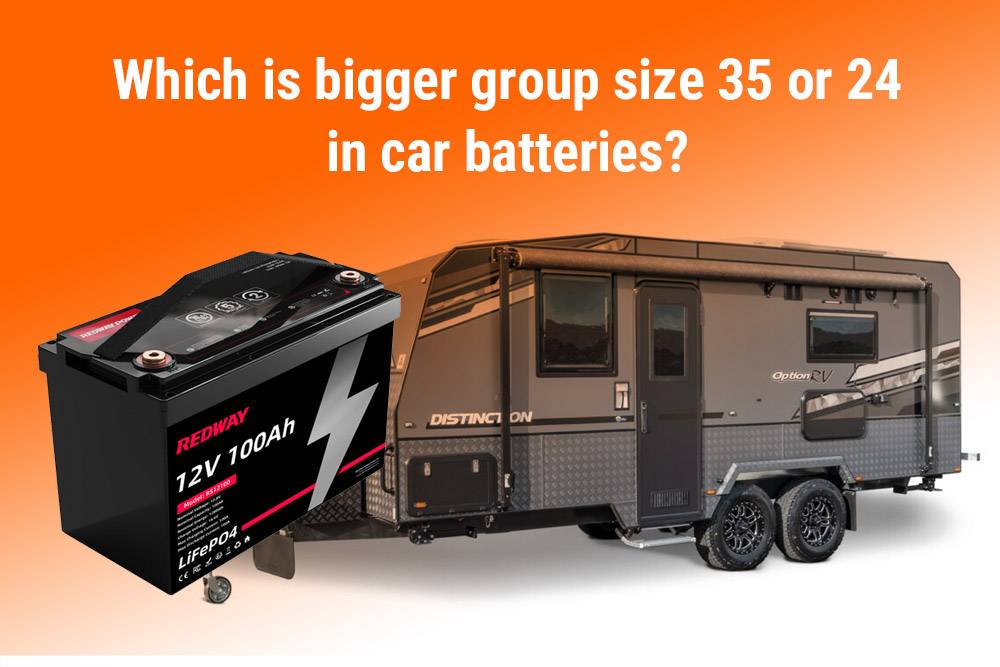
What is the difference between group 34 and 35 battery sizes?
Group 34 and Group 35 batteries differ in their physical dimensions and electrical characteristics. Group 34 batteries are typically larger and have higher capacity compared to Group 35 batteries, making them suitable for vehicles with higher energy demands.
Is a group 35 battery stronger than a group 24 at Walmart?
The strength of a battery depends on various factors such as its capacity, construction, and intended application rather than just its group size. Comparing specific batteries within each group, including their specifications and performance ratings, would provide a more accurate assessment.
Is a group 35 Duracell an AGM battery?
Duracell offers a variety of batteries, including AGM (Absorbent Glass Mat) batteries. Whether a specific Group 35 Duracell battery is an AGM type depends on the product specifications provided by the manufacturer.
How much does a group 35 battery weigh?
The weight of a Group 35 battery can vary depending on the brand, construction, and specific model. On average, Group 35 batteries typically weigh around 30 to 40 pounds.
Can I put a BCI group size 35 battery in a Nissan Altima Hybrid?
It’s essential to ensure that any replacement battery, including a BCI Group size 35 battery, meets the electrical requirements and fits securely in the battery compartment of a Nissan Altima Hybrid. Consulting the vehicle manual or a professional can provide guidance on compatibility.
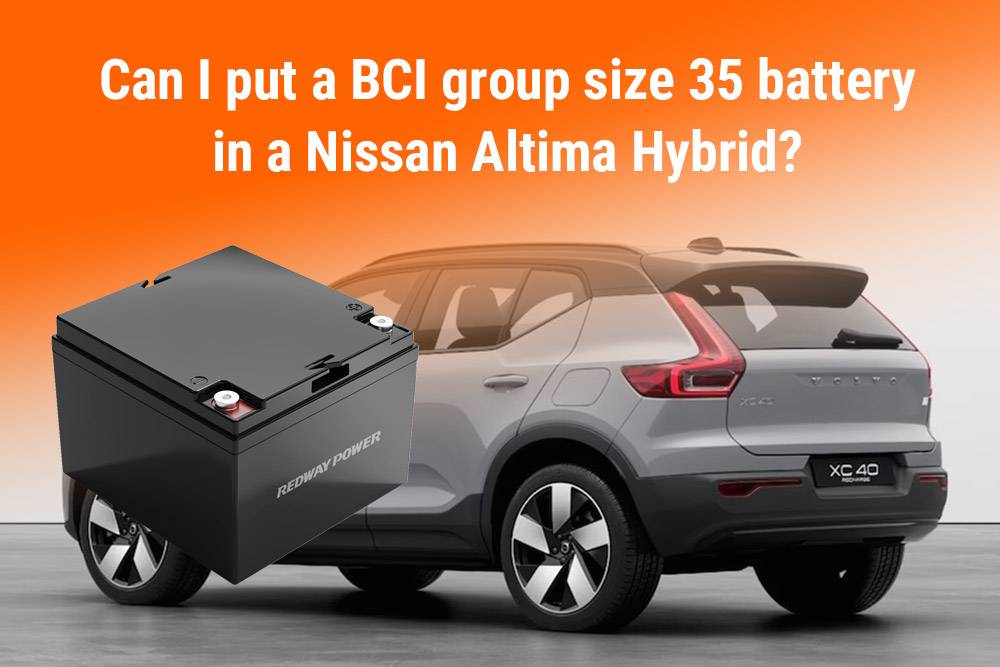
Which group 35 car batteries does Consumer Reports like best?
Consumer Reports evaluates car batteries based on factors such as performance, reliability, and value. Checking their latest reviews and ratings can help identify the group 35 car batteries recommended by Consumer Reports.














